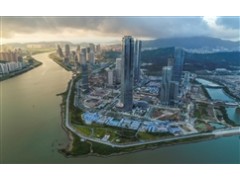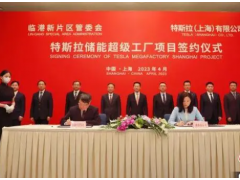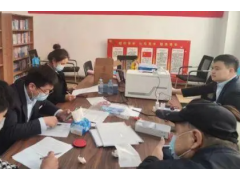Since the founding of the People's Republic of China 75 years ago, China's foreign economic and trade have achieved leapfrog development and historic achievements. The scale of foreign trade has repeatedly reached new highs, the quality of development has steadily improved, high-quality "import" and high-level "go global" are advancing simultaneously, regional economic cooperation continues to advance, and the level of opening up to the outside world continues to improve. Since the 18th National Congress of the Communist Party of China, China has actively promoted opening up to the outside world, continuously expanding the scope, fields, and levels of opening up, and becoming more closely connected with the world economy, accelerating the formation of a new pattern of high-level opening up to the outside world.
Data shows that China's goods trade has achieved brilliant results, with trade scale increasing from small to large and foreign trade competitiveness growing from weak to strong. As of 2023, it has maintained its position as the largest country in goods trade for seven consecutive years, and its stabilizing role in global trade continues to strengthen; Service trade has grown from scratch, with the scale of imports and exports expanding and the quality of development constantly improving. In 2023, the total import and export volume of services in China will be 933.1 billion US dollars. From 1983 to 2023, China's total import and export of services increased by 198 times, with an average annual growth rate of 13.8%. Among them, the export value of services increased by 142 times, with an average annual growth rate of 12.9%; The import value of services increased by 272 times, with an average annual growth rate of 14.7%.
Since the reform and opening up, China has also made great achievements in utilizing foreign investment. The fields of opening up to the outside world continue to expand, the foreign investment environment continues to improve, the structure of attracting foreign investment is increasingly optimized, and the level of utilizing foreign investment is constantly improving. The actual amount of foreign direct investment used increased from 11 billion US dollars in 1992 to 163.3 billion US dollars in 2023, a growth of 13.8 times, with an average annual growth rate of 9.1%. In 2023, China's actual use of foreign direct investment accounted for 12.3% of the global total, maintaining its position as the world's second largest inflow of foreign investment for three consecutive years.
Since the proposal of the "Going Global" strategy, China has actively participated in international exchanges and cooperation, continuously innovated foreign investment methods, increased policy support, improved service guarantee levels, driven the vigorous development of foreign direct investment, and achieved rapid expansion of scale and significant improvement in quality. In 2023, China's outward direct investment amounted to 147.85 billion US dollars, which is 1.7 times that of 2012. The scale of China's outward foreign direct investment has risen from 26th place in 2002 to 3rd place in 2012, ranking among the top 3 in global outward foreign direct investment flows for 12 consecutive years.
China adheres to high-level opening up to the outside world, deeply participates in global industrial division of labor, continuously deepens multilateral, bilateral, and regional economic cooperation, shares development opportunities with countries around the world, and continuously achieves new results in multilateral, bilateral, and regional economic cooperation, playing an important role in maintaining a diverse and stable international economic pattern and economic and trade relations.
It is worth mentioning that by the end of 2023, China has established a total of 22 free trade pilot zones, which have been tested and explored as a "prototype" for high-level opening up throughout the country. At present, these free trade pilot zones actively connect with international rules in trade, investment, finance, and other aspects, and have formed many institutional innovation achievements, accumulating rich experience for promoting high-level opening up to the outside world.
Photo by Song Jie, a reporter from China Economic Weekly
Witness: Xiao Benhua, member of the Standing Committee of the Shanghai Pudong New Area Political Consultative Conference
In 2009, the "Opinions of the State Council on Accelerating the Development of Modern Service Industry and Advanced Manufacturing Industry in Shanghai to Build an International Financial Center and International Shipping Center" was issued, officially elevating the construction of Shanghai International Financial Center and International Shipping Center to a national strategy.
Due to work requirements, I conducted research on the background of the issuance of this important document and found that after experiencing more than a decade of double-digit economic growth in the early 1990s, Shanghai faced new challenges in economic growth and needed to accelerate transformation and upgrading, and vigorously develop the modern service industry.
I have found that after being elevated to a national strategy, the pace of Shanghai International Financial Center construction has indeed accelerated, but there are still institutional bottlenecks, such as the low degree of capital account convertibility in China. In the research project, I also found that after a long period of rapid development, the Waigaoqiao Free Trade Zone also encountered some institutional bottlenecks, which affected trade and investment facilitation.
In September 2013, the China (Shanghai) Pilot Free Trade Zone (hereinafter referred to as the "Shanghai Free Trade Zone") was officially established, and since then, I have also started to pay attention to and track the construction of the Shanghai Free Trade Zone.
Financial reform, Shanghai Free Trade Zone takes the lead in trial implementation
In 2013, I worked at Shanghai University of Finance, mainly dedicated to in-depth research in the field of international financial center construction. During this process, I noticed that the Shanghai International Financial Center still has shortcomings in its internationalization process, which is closely related to the convertibility of China's capital account. Therefore, when I learned that Shanghai is about to establish a pilot free trade zone, I think the free trade zone should make breakthrough progress in promoting capital account convertibility.
Inspired by Wu Daqi, former Vice President of Shanghai University of Finance, I began to examine the construction of the Shanghai Free Trade Zone from a financial perspective and proposed to strengthen the free flow of cross-border funds, take the lead in reforming capital account convertibility, and take the lead in experimentation. This suggestion was not only included in the overall plan of the Shanghai Free Trade Zone, but also implemented some specific policies, such as allowing enterprises within the free trade zone to borrow RMB from overseas, significantly reducing their financing costs. This policy was first piloted in the Shanghai Free Trade Zone and later promoted nationwide. In 2014, the interest rate for domestic currency loans was at least 6%, while the interest rate for overseas RMB loans was generally below 4%
The convertibility of RMB capital account has always been a highly anticipated aspect of China's financial system reform and one of the most anticipated reforms in the pilot program of the free trade zone. I am proud to have proposed this suggestion at that time.
In 2013, I participated in field research on the construction of Shanghai Free Trade Zone and went to Waigaoqiao Free Trade Zone with colleagues from Shanghai Inspection and Quarantine Bureau to gain a deeper understanding of the actual needs of cosmetics and food import enterprises. We have put forward a series of policy recommendations to optimize the import customs declaration and inspection and quarantine process and reduce the burden on enterprises, in response to the complex issues raised by enterprises.
As my research deepened, I gradually transformed from an observer to a participant, and began to engage in discussions and formulation of reform policies for the Shanghai Free Trade Zone.
In early 2016, the Shanghai Financial Bureau approached the then Shanghai Institute of Finance to conduct a research project on the opening up of the financial services industry based on the negative list management model. Because I had previously completed a key decision-making consulting project on financial reform in the Shanghai Free Trade Zone by the Shanghai Municipal Government Research Center, and the research results of the project also won the second prize for excellent decision-making consulting achievements of the Shanghai Municipal Government, Professor Wang Hongwei, who was then the dean of the Shanghai Institute of Finance, entrusted the task to me.
based on the research results of this topic, the Shanghai Free Trade Zone Management Committee and the Shanghai Financial Office jointly issued the Negative List Guidelines for the Opening up of the Financial Services Industry in the Shanghai Free Trade Zone in 2017 (2017 version). For the first time in China, a negative list guideline has been established specifically for the financial services industry, further promoting financial openness and innovation in the Shanghai Free Trade Zone.
More importantly, in the negative list guidelines, we have sorted out the restrictions and prohibitions on China's financial industry's opening up to the outside world, and believe that some of these measures should be gradually abolished or relaxed. As a result, we have formed a policy recommendation list in our research project, which has continuously provided some suggestions for expanding the opening up of the financial industry in Shanghai Free Trade Zone and even the whole country.
In 2017, I served as a member of the Pudong New Area Political Consultative Conference and was later elected as a standing committee member of the Pudong New Area Political Consultative Conference. Since then, I have had more opportunities to interact with relevant leaders of the Shanghai Free Trade Zone, learn more about the construction of the Shanghai Free Trade Zone, and began to pay attention to the construction of the Shanghai Free Trade Zone from a global and broader perspective.
In 2021, I led the completion of a research project on the "one industry, one certificate" reform of the Shanghai Free Trade Zone by the Pudong New Area Political Consultative Conference, and put forward relatively systematic policy recommendations on deepening the "one industry, one certificate" reform.
Eleven years of continuous reform, looking forward to the future and embarking on a new journey
The Shanghai Free Trade Zone is the first free trade zone in China. Since its establishment in 2013, 11 years of reform have left a glorious page in the history of China's reform and opening up. Its main significance lies in the fact that many of its reform concepts have gradually become a consensus for deepening reform in China in the new era, such as being a highland for institutional innovation and a depression for policies.
Secondly, after 11 years of reform, the Shanghai Free Trade Zone has basically established an institutional system that is in line with international economic and trade rules, a risk stress testing system that is compatible with an open economic system, a government governance system that is compatible with modern governance capabilities, and a reform coordination system that is compatible with national strategic requirements. These are all important components of China's valuable experience in comprehensively deepening reform in the new era.
For other free trade zones across the country, Shanghai Free Trade Zone not only provides a large amount of replicable and promotable experience directly, but more importantly, it provides useful inspiration for other free trade zones in terms of construction concepts, such as systematic integration of institutional innovation and adherence to bottom line thinking.
Under the current international economic situation, the "counter globalization" promoted by some developed countries is the biggest challenge facing the Shanghai Free Trade Zone, but at the same time, the deepening of the "the Belt and Road" initiative and the acceleration of the pace of RMB internationalization will also provide good opportunities for the construction of the Shanghai Free Trade Zone. The Shanghai Free Trade Zone should actively seize opportunities and bravely face challenges, turn crises into opportunities, actively benchmark new international economic and trade rules, understand the internal logic of new international economic and trade rules, respond faster and better, win the initiative to define rules, and provide beneficial exploration for China's participation in global economic governance.
Looking ahead to the future, in terms of institutional innovation, we hope to give Shanghai Free Trade Zone more autonomy in reform and innovation, and narrow the institutional gap with high standard economic and trade rules such as CPTPP (Comprehensive and Progressive Agreement for Trans Pacific Partnership) and DEPA (Digital Economy Partnership Agreement); In terms of industrial upgrading, the Shanghai Free Trade Zone has accelerated the development of key industries such as integrated circuits, biomedicine, artificial intelligence, and civil aviation, and made breakthroughs in the industrialization of more key "bottleneck" technologies; In terms of financial openness, the Shanghai Free Trade Zone continues to promote the opening-up of the financial service industry and the reform of capital account convertibility, and has built the Shanghai International Financial Asset Trading Platform and continuously improved its level.





